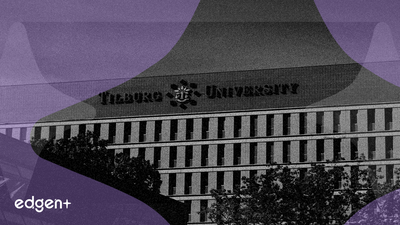Related News

Global Regulators Warn Stablecoin 'Run' Poses Systemic Risk to U.S. Treasury Market
## Executive Summary Global financial regulators, led by the **European Central Bank (ECB)**, are escalating warnings about the systemic risks stablecoins pose to global financial stability. The core of the concern lies in the potential for a "run" on these digital assets, which could compel issuers to liquidate vast holdings of **U.S. Treasuries** and other traditional assets, thereby triggering a contagion event within the core of the global financial system. ## The Event in Detail The ECB, in a recent report, explicitly stated that a run on stablecoins could disrupt the functioning of U.S. Treasury markets. This sentiment is echoed by the **International Monetary Fund (IMF)** and the **Financial Stability Board (FSB)**. The stablecoin market, valued at over **$300 billion**, is dominated by tokens like **Tether (USDT)**, which has a market capitalization exceeding **$184 billion** and is one of the most-traded cryptocurrencies. Central bank officials draw parallels to the 2008 financial crisis, where a run on a $600 billion money-market fund, triggered by the collapse of **Lehman Brothers**, led to a freeze in global credit markets. The fear is that a similar loss of confidence in a major stablecoin could force an instantaneous and far larger fire sale of its reserve assets to meet redemption demands. > "A run on these stablecoins could trigger a fire sale of their reserve assets, which could affect the functioning of US Treasury markets," the ECB report stated. ## Deconstructing the Financial Mechanics Stablecoins are designed to maintain a stable value by pegging to a fiat currency, most commonly the U.S. dollar. To achieve this, issuers hold a basket of reserve assets. While intended to be fully backed, the composition of these reserves often includes not just cash but also commercial paper and a significant allocation of **U.S. Treasury bonds**. A "run" occurs when holders lose faith in the issuer's ability to maintain the 1:1 peg and rush to redeem their tokens for fiat currency. To honor these redemptions, the issuer would be forced into a rapid liquidation of its most liquid assets—primarily its U.S. Treasury holdings. A sudden influx of sell orders in the **$25 trillion** Treasury market from a major stablecoin issuer could depress prices and spike yields, creating widespread financial instability. ## Market Implications The potential for contagion is the primary concern for regulators. The **Australian central bank** noted that a crisis could "spill over into repo and other core US funding markets." Because U.S. government debt is a benchmark asset used as collateral in financial transactions globally, instability in this market would have far-reaching consequences, impacting everything from corporate borrowing costs to international trade finance. While the ECB assesses that direct "financial stability risks stemming from stablecoins are limited within the euro area" due to their peg to U.S. assets, the interconnected nature of global finance means a crisis in U.S. funding markets would inevitably spread to European institutions. This highlights the growing integration of the crypto-asset ecosystem with traditional finance. ## Broader Context These warnings are part of a broader push by global standard-setting bodies and governments to establish a robust regulatory framework for the crypto industry. In the U.S., legislation such as the proposed **GENIUS Act** aims to enforce 1:1 reserve requirements for regulated stablecoins to mitigate run risks. The situation presents a critical tension between financial innovation and systemic stability. As stablecoins become more integrated into the financial mainstream, their stability becomes increasingly intertwined with the health of the traditional markets they rely upon for their reserves. The consensus among global regulators is that without comprehensive oversight, this linkage poses a clear and present danger to the global financial order.

Aspen Group Reports Second Consecutive Profitable Quarter on Strong USU Growth
## Executive Summary Aspen Group, Inc. has reported a net income of $0.4 million for the first quarter of fiscal 2026, achieving its second consecutive quarter of profitability. This performance signals a potential operational turnaround for the education technology firm, fueled by revenue growth from its United States University (USU) subsidiary and a continued focus on disciplined cost management. The results suggest the company's strategic initiatives toward sustainable financial health are beginning to yield consistent results. ## The Event in Detail For the fiscal quarter, Aspen Group announced total revenues of **$11.4 million**, an increase attributed primarily to the strong performance of its **USU** segment. The company achieved a net income of **$0.4 million**, reinforcing the positive net income result from the previous quarter. According to company reports, this financial success is a direct result of both top-line growth at USU and effective, organization-wide cost controls that have streamlined operations and improved efficiency. ## Business Strategy and Financial Mechanics The company's recent performance highlights a deliberate strategic shift toward sustainable profitability over aggressive, costly expansion. By prioritizing the growth of its **USU** subsidiary, which saw a **13.2% year-on-year increase** in recurring revenue, Aspen Group is focusing resources on its most productive assets. This targeted growth, coupled with what the company describes as "disciplined cost controls," has allowed it to successfully improve its bottom line and achieve profitability. This two-pronged approach—driving revenue in a key division while managing enterprise-wide expenses—is central to its current financial stability. ## Market Implications The achievement of a second consecutive profitable quarter is a significant milestone for Aspen Group and may positively influence investor sentiment. It provides evidence that the company's turnaround strategy is not a one-off success but is potentially becoming a sustainable trend. For the broader for-profit education sector, Aspen's results demonstrate the viability of a model centered on operational efficiency and focused growth in high-performing segments, rather than undifferentiated, large-scale enrollment pushes that have historically led to financial instability for other institutions in the space. ## Broader Context The for-profit education industry has long faced regulatory scrutiny and market volatility. Many companies have struggled to balance growth with profitability and regulatory compliance. Aspen Group's recent success, rooted in financial discipline and strategic focus on its university segment, could position it as a case study in sustainable management within the sector. This approach contrasts with debt-fueled expansion models and may signal a maturing market where operational excellence is increasingly rewarded over sheer scale.

Aspen Group Stock Rises 32% Amid Stronger-Than-Industry ROE
## Executive Summary **Aspen Group (ASX:APZ)** has demonstrated significant stock price appreciation, recording a 32% gain over the past three months. This market performance is underpinned by a key financial indicator, Return on Equity (ROE), which surpasses the industry average. However, broader analysis suggests a degree of caution is warranted, as market sentiment remains uncertain due to other underlying financial metrics. ## The Event in Detail The primary development is the 32% appreciation in **Aspen Group's** stock value over the last quarter. This rally directs attention to the company's financial health, particularly its Return on Equity. The company’s ROE stands above the real estate industry's average of 5.9%. ROE, calculated by dividing net income by shareholder equity, is a critical measure of a corporation's profitability and efficiency in generating profits from its equity base. A higher ROE is generally viewed as a positive sign of effective financial management. ## Market Implications The notable stock increase suggests positive investor sentiment, likely fueled by the company's earnings growth and favorable ROE comparison. An ROE that exceeds the industry benchmark can signal a competitive advantage and attract investors seeking fundamentally sound opportunities. However, the reported "Uncertain" market sentiment in the core analysis suggests that the headline numbers may not tell the whole story. Factors such as a high payout ratio or the absolute value of the ROE, while better than the average, might be viewed as moderate, tempering investor enthusiasm. ## Expert Commentary Financial analysis highlights the disparity between **Aspen Group's** ROE and the industry standard. > As shown in market-wide research, a higher ROE is generally indicative of effective financial management and strong performance. The fact that **Aspen's** performance on this metric is superior to the 5.9% industry average is a significant point of interest for analysts. It suggests the company is more efficient at generating profit from shareholder investments than its average competitor. This data point is a cornerstone for any valuation thesis concerning the company. ## Broader Context In the competitive real estate sector, firms that can demonstrate superior financial efficiency often stand out. **Aspen Group's** performance should be assessed in this context. It is also critical for investors to distinguish **Aspen Group (ASX:APZ)** from other similarly named but unaffiliated entities, such as **Aspen Aerogels, Inc. (NYSE:ASPN)**, which also saw a 32% gain in a recent month, and **Aspen (Group) Holdings Limited (SGX:1F3)**, which conversely saw its share price fall 32% in a recent thirty-day period. This highlights the importance of precise due diligence in investment analysis.
